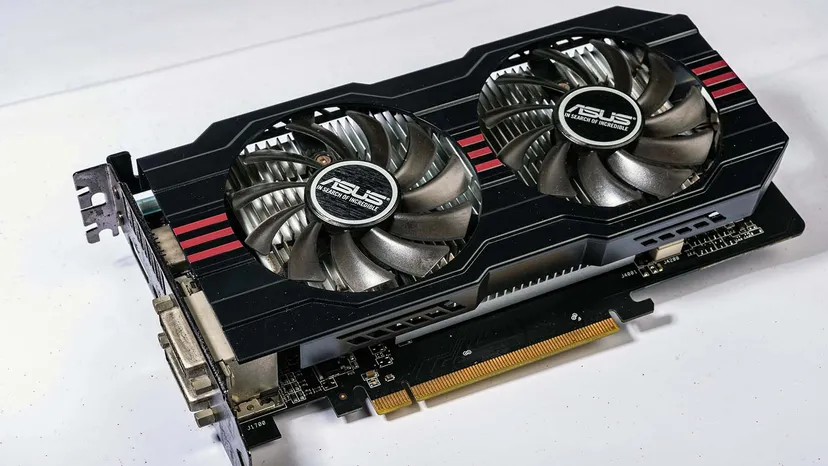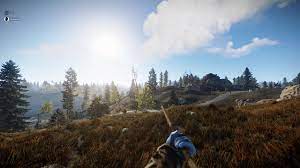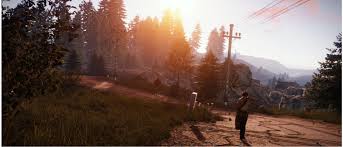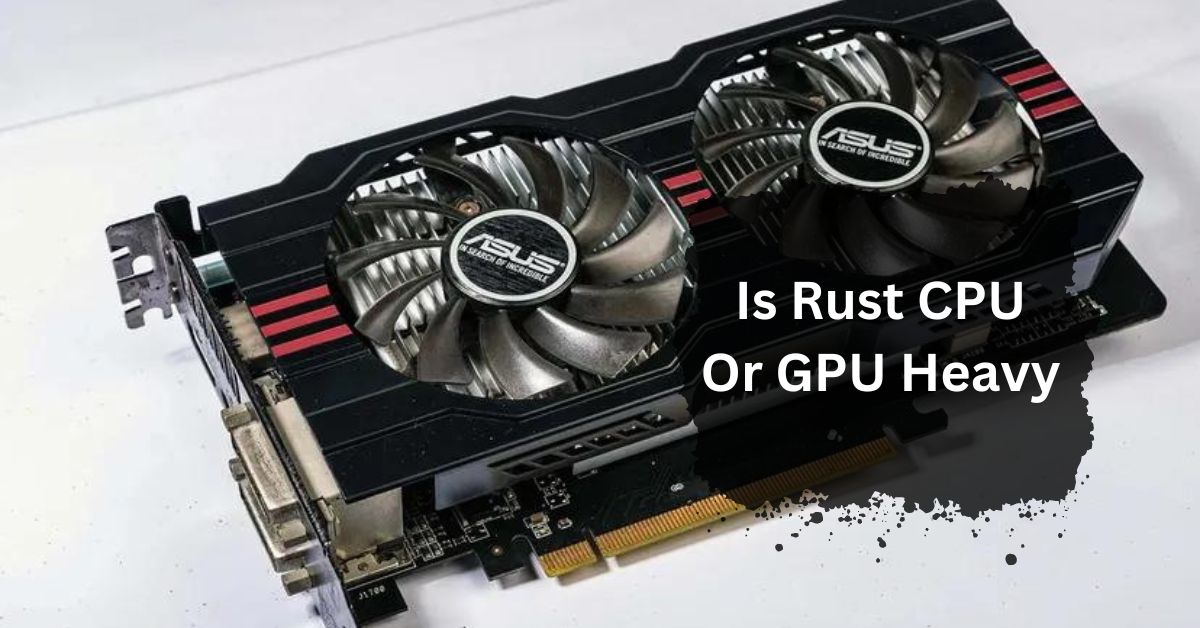Rust is a popular survival game that combines elements of combat, exploration, and crafting in an open-world environment. Given its detailed graphics and complex gameplay, many players wonder whether Rust is more demanding on the CPU or GPU. Understanding the hardware requirements is crucial for a smooth gaming experience, whether you’re building a new PC or upgrading an existing one.
Rust is more CPU-heavy than GPU-heavy. It uses the CPU for game logic, AI, and physics calculations. While a good GPU helps with graphics, having a strong CPU will give you the best performance in Rust.
In this article, we will discuss “Is Rust CPU Or GPU Heavy”.
Table of Contents
Understanding CPU and GPU:
Definition and Role of CPU:
The Central Processing Unit (CPU) is the brain of your computer. It handles all the essential instructions and calculations that allow your system to function.
In gaming, the CPU is responsible for tasks such as physics calculations, game logic, and handling the AI of non-player characters (NPCs).
Definition and Role of GPU:
The Graphics Processing Unit (GPU) is a specialized processor designed to handle rendering images and videos.

For gamers, the GPU is crucial as it manages the graphical elements of a game, including textures, lighting, and shadows, ensuring smooth and visually appealing gameplay.
Game Performance: CPU vs. GPU:
1. How Games Utilize CPU:
Games rely on the CPU for various computational tasks. These include processing game logic, managing system resources, and ensuring that all game elements interact correctly. The CPU’s efficiency can significantly impact game performance, especially in titles with complex simulations and AI.
2. How Games Utilize GPU:
The GPU’s primary role in gaming is to render graphics. This includes drawing polygons, applying textures, and managing lighting effects.
Modern games with high graphical fidelity rely heavily on the GPU to deliver smooth frame rates and detailed visuals.
3. Balance Between CPU and GPU in Gaming:
Most games strive to balance CPU and GPU usage to avoid bottlenecks. A bottleneck occurs when one component limits the performance of the other, leading to suboptimal game performance.
Ideally, both the CPU and GPU should work in harmony, ensuring neither is overburdened.
Read: What Is Normal GPU Usage While Gaming – Guide Of 2024!
Rust: An Overview:
1. What is Rust?
Rust is a multiplayer survival game where players must gather resources, build shelters, and defend themselves from other players and environmental threats.
The game is known for its realistic graphics, complex crafting system, and intense player interactions.
2. Gameplay and Graphics of Rust:
Rust’s gameplay involves a mix of exploration, combat, and crafting. Its graphics are detailed and realistic, featuring lush forests, rugged terrains, and dynamic weather effects. The game’s visual appeal is one of its major draws, making efficient GPU performance crucial.
Read: Is 70c Safe For GPU – A Ultimate Guide Of 2024!
Rust’s CPU Usage:
1. How Rust Uses CPU:
Rust uses the CPU for several critical tasks. These include handling the game’s physics engine, managing AI behavior, and processing player inputs.
The CPU is also responsible for running the game’s server logic, which is vital in a multiplayer environment.
2. CPU-Intensive Tasks in Rust:
Tasks such as calculating projectile trajectories, simulating environmental physics, and managing the intricate crafting system are CPU-intensive. Additionally, the AI routines for NPCs, like animals and hostile entities, require significant CPU resources.
3. Examples of CPU-Heavy Activities in Rust:
Large-scale base building, complex crafting operations, and interactions with numerous players or NPCs can heavily tax the CPU. Players often notice performance dips during massive raids or when navigating densely populated areas.

Read: How Long Does GPU Last – A Comprehensive Guide Of 2024!
Rust’s GPU Usage:
1. How Rust Uses GPU:
Rust leverages the GPU to render its detailed environments and intricate textures. The GPU handles tasks such as drawing landscapes, applying lighting effects, and rendering shadows and reflections.
3. GPU-Intensive Tasks in Rust:
Rendering detailed textures, managing dynamic lighting, and processing post-processing effects are GPU-intensive tasks. The game’s lush environments and weather effects, like rain and fog, also rely heavily on the GPU.
4. Examples of GPU-Heavy Activities in Rust:
Exploring large, visually detailed areas, engaging in combat with multiple visual effects, and experiencing dynamic weather changes are GPU-heavy activities. Players may experience frame rate drops in graphically intense situations.
Read: What Is A Reference GPU – A Complete Guide Of 2024!
Comparing Rust’s CPU and GPU Usage:
1. Which is More Critical: CPU or GPU?
Both the CPU and GPU are crucial for an optimal Rust experience. However, given the game’s heavy graphical demands, the GPU often takes center stage. That said, a strong CPU is necessary to handle the game’s complex logic and physics.
2. Situations Where CPU Matters More:
During massive player interactions, intricate base building, and AI-heavy scenarios, the CPU plays a more significant role. A robust CPU ensures smooth gameplay during these intensive activities.
3. Situations Where GPU Matters More:
In visually complex environments, combat scenes, and dynamic weather conditions, the GPU is more critical. A powerful GPU ensures that Rust’s detailed graphics run smoothly, providing an immersive experience.
Read: Is 12GB GPU Enough For Gaming – A Ultimate Guide of 2024!
Optimizing Performance in Rust:
1. Tips for Optimizing CPU Performance:
Close Background Applications: Reduce the CPU load by closing unnecessary background applications.
Upgrade Your CPU: Consider upgrading to a more powerful CPU if your current one struggles.
Optimize Game Settings: Lower settings for CPU-intensive tasks like physics simulations.
2. Tips for Optimizing GPU Performance:
Update Drivers: Keep your GPU drivers up to date for the best performance.
Adjust Graphics Settings: Lower settings like texture quality, shadow detail, and post-processing effects.
Overclock Your GPU: If you’re comfortable, overclocking can provide a performance boost.
3. General Optimization Strategies:
Regular Maintenance: Keep your system clean and dust-free to prevent overheating.
Monitor Performance: Use monitoring tools to identify and address performance bottlenecks.
Balanced Upgrades: Ensure both your CPU and GPU are adequately powerful to avoid bottlenecks.
Read: Is 70 GPU Temp Bad – A Ultimate Guide Of 2024!
Is Fortnite CPU or GPU heavy?
Fortnite uses both the CPU and GPU, but it depends more on the GPU. This means a good graphics card is important for smooth gameplay. However, having a decent CPU also helps with overall performance.
Read: What Is GPU Cache – A Complete Guide Of 2024!
Is Siege CPU or GPU intensive?
Siege, also known as Rainbow Six Siege, is more CPU-intensive than GPU-intensive. This means it needs a strong processor to run smoothly. However, having a good GPU also helps to get better graphics and performance.
Read: Do Both Monitors Need To Be Connected To The GPU – Complete Guide!
Does rust depend on CPU or GPU?
Rust depends more on the CPU than the GPU. The CPU handles game logic, AI, and physics, while the GPU is used for graphics. For the best performance in Rust, a strong CPU is more important.
Read: Is 30 degrees idle good GPU – Ultimate Guide of 2024!
Does Rust use a lot of CPU?
Yes, Rust uses a lot of CPU power. The game needs a strong CPU to handle game logic, AI, and physics. A powerful CPU helps ensure smooth performance and better gameplay.
Is Rust a heavy game to run?

Yes, Rust is heavy on system resources. It needs a strong CPU and a good GPU for smooth gameplay. Players with high-performance computers will have a better experience due to the game’s demanding requirements.
Is gaming CPU-heavy or GPU-heavy?
Gaming can be both CPU-heavy and GPU-heavy, depending on the game. Most games use the GPU for graphics and visual effects, while the CPU handles game logic and other tasks. A balance of both is needed for the best experience.
Is Rust more CPU or GPU-intensive?
Rust is more CPU-intensive. The game relies heavily on the CPU for tasks like game logic and physics. While a good GPU is still important for graphics, having a strong CPU is crucial for smooth performance in Rust.
Where is my bottleneck on rust?
Your bottleneck in Rust is usually the CPU. If you experience lag or low performance, it’s often because the CPU is struggling with game logic and tasks. Upgrading your CPU or optimizing settings might help improve performance.
Is World of Warcraft more CPU or GPU-intensive?
World of Warcraft is more CPU-intensive. The game relies on the CPU for handling game logic, player actions, and complex systems. While a good GPU is important for graphics, a strong CPU is key for smooth gameplay.
Is Valorant GPU or CPU intensive?
Valorant is more CPU-intensive. The game relies on the CPU for handling game logic and player actions. While a good GPU helps with graphics, a strong CPU is crucial for smooth and responsive gameplay in Valorant.
Is CS:GO CPU or GPU intensive?
CS is more CPU-intensive. The game relies heavily on the CPU for handling game logic and player actions. A good GPU improves graphics, but a strong CPU is essential for smooth performance and responsiveness in CS.
Is GTA V more CPU or GPU-intensive?
GTA V is more GPU-intensive than CPU-intensive. This means it needs a strong graphics card to run smoothly and show good graphics. However, having a good CPU also helps to improve the overall performance.
Is League of Legends more CPU or GPU-intensive?
League of Legends is more CPU intensive than GPU intensive. This means it needs a good processor to run smoothly. However, having a decent GPU also helps to improve the game’s graphics and overall performance.
Which is worse to have, a CPU bottleneck or a GPU bottleneck?
Both CPU and GPU bottlenecks are bad, but a CPU bottleneck is often worse. This is because the CPU handles many tasks. If the CPU is too slow, it can cause the entire system to run poorly.
Is this game CPU-intensive or GPU-intensive?
To know if a game is CPU-intensive or GPU-intensive, check its requirements. CPU-intensive games need a strong processor, while GPU-intensive games need a good graphics card. Both are important for smooth performance and good graphics.
Best CPU for Rust:
The best CPU for playing Rust is a high-performance processor like the Intel Core i7 or AMD Ryzen 7. These CPUs handle Rust’s demands well, ensuring smooth gameplay and good performance.
Is Valorant CPU or GPU intensive?
Valorant is more CPU intensive than GPU intensive. This means it needs a good processor to run smoothly. However, having a decent GPU also helps to improve the game’s graphics and overall performance.
Is Tarkov CPU or GPU-intensive?
Tarkov, also known as Escape from Tarkov, is both CPU and GPU-intensive. It requires a strong processor and a good graphics card to run smoothly and provide good graphics and performance.
Why is this game SO extremely CPU-heavy?

This game is very CPU-heavy because it handles many complex tasks, like processing player actions and game mechanics. A strong processor is needed to manage these tasks smoothly and keep the game running well.
FAQs:
Is Rust more CPU or GPU-intensive?
Rust is demanding on both the CPU and GPU. The CPU handles the game’s logic and AI, while the GPU manages the graphics and visual effects.
Can you play Rust on a low-end PC?
Yes, but you may need to lower the graphics settings significantly to achieve playable performance. Ensuring your PC meets at least the minimum requirements is essential.
What settings can be adjusted to improve performance?
Lowering texture quality, shadow detail, and resolution can help improve performance. Adjusting these settings reduces the load on your GPU, leading to smoother gameplay.
How often should you update your hardware for gaming?
It’s recommended to update your hardware every 3-5 years to keep up with the demands of modern games. Keeping your components up to date ensures better performance and compatibility.
Are there any mods to improve Rust’s performance?
There are no official mods for improving performance, but community-created guides and tweaks can help optimize your game settings for better performance.
Conclusion:
In conclusion, Rust is more demanding on the CPU than the GPU. While a strong GPU is important for clear graphics, a powerful CPU is essential for handling the game’s complex logic and physics. For the best experience in Rust, make sure both your CPU and GPU are up to the task.

I’m Noah Lucas, the voice behind the content you find here. With 5 years of experience in the GPU field, my goal is to provide clear and helpful information to everyone interested in this technology.
Whether you’re new to GPUs or looking to deepen your understanding, my articles aim to break down complex topics into simple, easy-to-understand language. This way, no matter where you’re from, you can find the information you need without any confusion.

